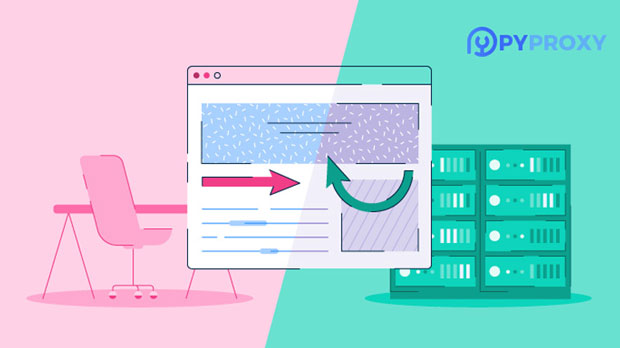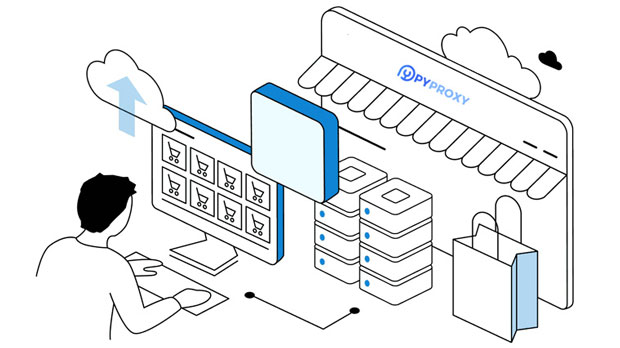When it comes to internet security and privacy, the need for proxies has significantly risen. A dedicated proxy is one of the most secure and private options available. However, with such high-quality services come varying costs. In this article, we will explore how much a dedicated proxy typically costs, and if it is expensive or not. By understanding the factors that influence proxy pricing, you will be able to make an informed decision when considering whether a dedicated proxy is worth the investment. We'll break down the pricing models, advantages, and factors affecting the cost to give you a comprehensive overview. What is a Dedicated Proxy?A dedicated proxy is an internet proxy service that provides an exclusive, single IP address for the user. Unlike shared proxies, which allow multiple users to use the same IP, a dedicated proxy is assigned to only one person. This ensures higher security, faster speed, and greater privacy. The primary reason businesses and individuals use dedicated proxies is for anonymity and security while accessing the internet, bypassing geographical restrictions, or web scraping.Understanding the Pricing Model for Dedicated ProxiesThe cost of a dedicated proxy varies depending on several factors, such as the provider, the number of proxies required, and the geographical location. Generally speaking, prices for dedicated proxies can range from $10 to $100 per month for a single proxy. However, many providers offer bulk pricing and discounts based on the number of proxies purchased.1. Single Proxy Price For a single dedicated proxy, you can expect to pay anywhere from $10 to $30 per month. This price can fluctuate depending on the provider and the quality of the proxy offered.2. Bulk Proxy Pricing If you require multiple dedicated proxies, many services offer discounts. For example, purchasing 10 proxies might cost around $80 to $150 per month, while 50 proxies could cost between $400 to $800 per month. Larger quantities often come with further discounts.3. Premium and Specialized Proxies Some dedicated proxies, especially those with specialized services like faster speeds or higher anonymity, can cost more. Providers offering highly secured, premium services might charge $50 to $100 or even higher per proxy each month.Factors Influencing the Cost of Dedicated ProxiesSeveral factors can influence how much a dedicated proxy costs. These include the proxy’s location, the type of proxy, and the quality of the service provided. Let’s take a closer look at these factors:1. Geographical Location of the Proxy The geographical location of the IP address you require can significantly affect the price. Proxies from countries with higher demand, like the United States or Western Europe, tend to be more expensive than proxies from countries with less demand. Additionally, proxies from data centers in certain regions may be more costly due to operational costs in those areas.2. Type of Proxy Some dedicated proxies are optimized for specific purposes. For example, residential proxies (IP addresses assigned by Internet Service Providers to homeowners) are generally more expensive than data center proxies (IP addresses provided by data centers). Residential proxies are more authentic and harder to detect, which makes them more expensive.3. Provider’s Reputation and Service Quality Providers with established reputations and strong security measures will typically charge higher prices. This is because the level of service, speed, and reliability they offer is usually better. Higher-end proxies, such as those with guaranteed uptime and high bandwidth, tend to come at a premium.Is a Dedicated Proxy Expensive?Whether a dedicated proxy is considered expensive depends on what you are using it for. Let’s break it down into different scenarios to help you decide:1. For Businesses If you are a business using proxies for tasks like web scraping, SEO, or social media management, a dedicated proxy can be considered a worthwhile investment. The security and privacy provided by dedicated proxies, as well as their speed and reliability, outweigh the costs. Prices ranging from $10 to $50 per month for a single proxy are generally reasonable when you consider the value they provide in terms of data collection and protection.2. For Individual Users For individual users, such as those using proxies to access content or protect their privacy while browsing, the cost can seem higher. However, the added security and privacy benefits are crucial for anyone concerned about their online activities. For individual users, the monthly cost can be seen as an investment in personal online protection.3. For Casual Use If you are using a dedicated proxy for occasional tasks, such as bypassing geo-blocked content, a dedicated proxy may seem expensive compared to shared or free proxies. However, the premium features and lack of traffic congestion make it a more reliable and secure choice for those with higher demands.Are Dedicated Proxies Worth the Investment?The worth of a dedicated proxy depends on your usage requirements. If privacy, security, and reliability are of utmost importance, investing in a dedicated proxy is certainly a good choice. The advantages of using a dedicated proxy, including better performance, exclusivity, and enhanced anonymity, are compelling reasons to consider this option, especially for businesses or individuals who require consistent and safe internet access.1. Enhanced Privacy and Security Dedicated proxies are much more secure compared to shared proxies, as no other user shares the same IP address. This reduces the risk of being affected by malicious activities like IP blacklisting or hacking attempts. If privacy is your top priority, the extra cost of a dedicated proxy is certainly justified.2. Better Speed and Performance Dedicated proxies also tend to perform better than shared proxies. As you are the only user of the IP address, the server is not shared with others, leading to faster speeds and less congestion. This is particularly important for businesses that rely on high-speed data processing and web scraping.3. Bypass Geographical Restrictions Dedicated proxies allow you to access content that might be restricted in your location. For example, users can access region-specific content from Netflix, BBC, or other services without any issues. This can be invaluable for both businesses and personal users.Conclusion: Is the Cost Worth It?In conclusion, the cost of a dedicated proxy can range widely, from as low as $10 per month for a single proxy to over $100 for specialized services. While the price might seem high compared to free or shared proxies, the added benefits of privacy, security, speed, and reliability make dedicated proxies a worthy investment, especially for businesses and serious internet users. By understanding the factors that affect pricing and what you need from a proxy, you can make an informed decision that aligns with your goals and budget.
May 21, 2025
![arrow]()



















































